Article written by Elisa - Travel Writer & Local in France
This article may contain compensated links. Please read disclaimer for more info.
France Transportation Guide
When planning a trip to France, it is essential to decide how to get around. This quick France transportation guide covers all the means of transport in France, with our recommendations on what to use depending on your travel style, itinerary, and budget.
If you are visiting France from outside Europe, you may not be familiar with the France transportation system in general or with some French transportation options. This guide will take you step by step through each modes of transportation in France, so you know what to expect during your trip.
Transportation in France for tourists is the same than for locals so we won’t make any distinction between visitors and locals.
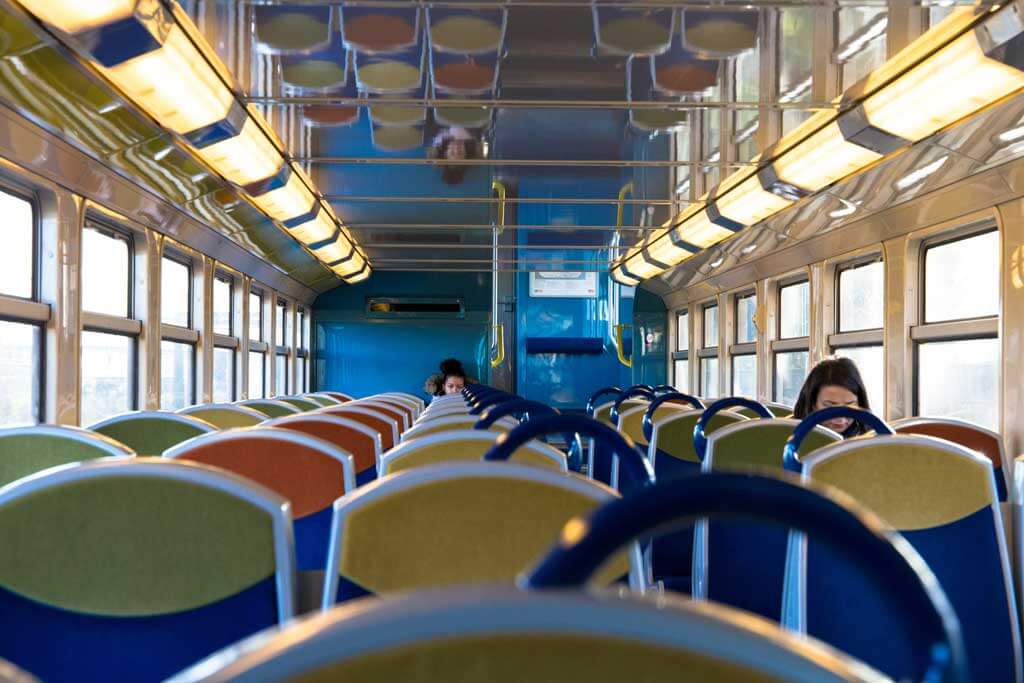
Transportation in France Content:
- Train Travel in France
- France by Car
- Airport Transfers in France
- Flying within France
- Ferries in France
- Buses in France
Means of Transport in France
1. Train Travel in France
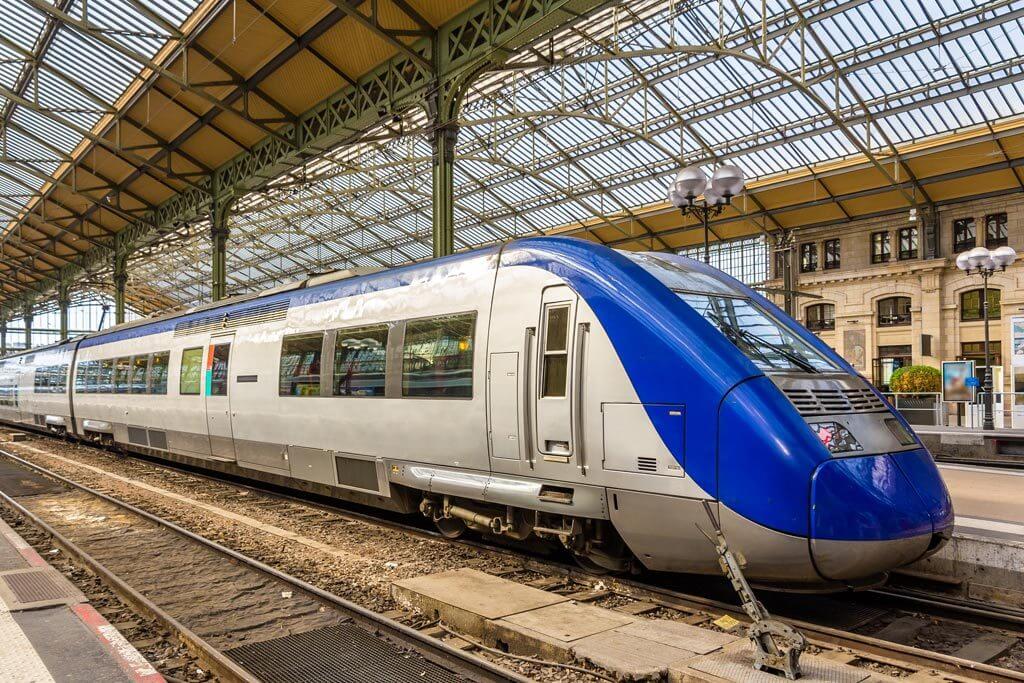
Trains are one of our favorite modes of transportation in France. Train travel is an excellent way to explore the most beautiful cities in France. France has an extensive network of fast trains (called TGV), intercity trains (Intercités), and regional services connecting smaller cities and towns.
If you live in the neighboring countries, international trains are also a good and fast way to visit the main cities in France. Popular international train lines are:
- London to Paris
- London to Lille
- Frankfurt to Paris
- Frankfurt to Marseille
- Karlsruhe to Strasbourg
- Stuttgart to Strasbourg
- Bruxelles to Paris
- Amsterdam to Paris
- Milan to Paris
- Milan to Nice
- Barcelona to Toulouse
Traveling in France by train is fast, efficient, and definitely more eco-friendly than by car or plane. If you book your tickets in advance, France by train is convenient too.
If you are interested in train travel, don’t miss our France by train guide and all our posts dedicated to train travel in France.
We recommend using the Omio website if you want to check the timetables and book your train journeys. Omio gives you a handy comparison of train departures, travel times, and prices for all the train operators in France, plus it is written in English. When you are ready to book your travel, your tickets are held in their app, so there is no paper or extra documentation.
2. France by Car
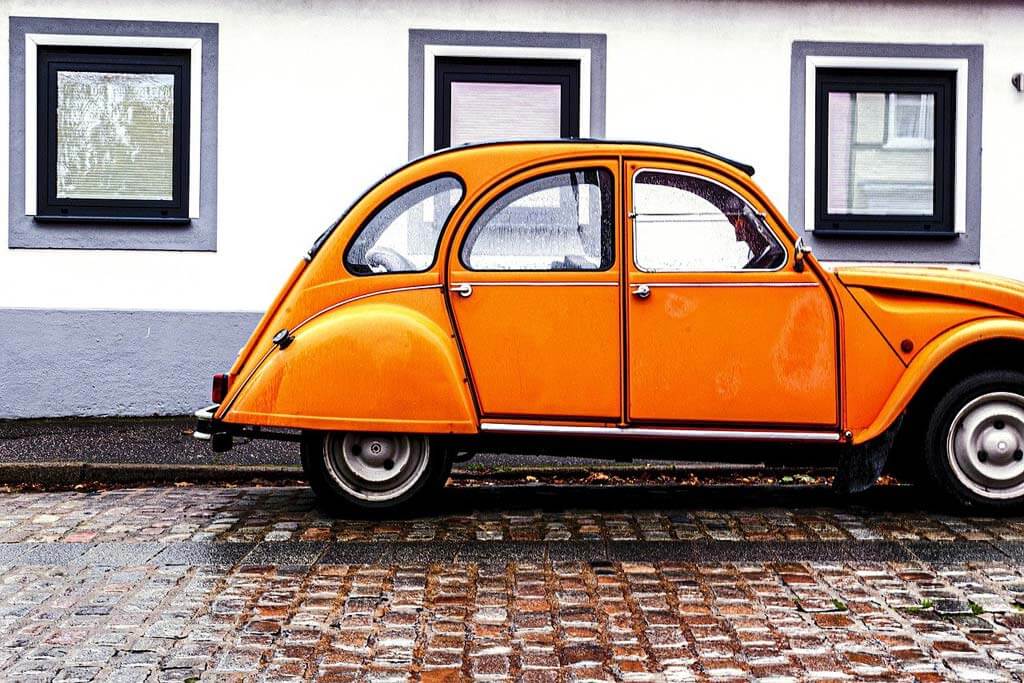
France by car is a fun way to explore the country. With a car and a good map, you can visit beautiful places difficult to reach by bus or train. In fact, many off-the-beaten-path towns in the mountains or the countryside can only be explored by car.
We recommend a French road trip if you want to focus on a specific region, visiting the main cities and towns and its hidden gems. If you want to do the French wine routes or you fancy staying in one of the wonderful château-hotels in France, you will need a car too.
If you want to combine a holiday to Paris + a road trip to explore another region, most of the time it is smarter (and cheaper) to take a train from Paris to this region and then rent the car there. For example, if you want to visit Paris + Alsace, take a train from Paris to Strasbourg or from Paris to Colmar and rent a car from one of these two cities in Alsace.
If you plan to explore France by car, don’t miss our quick guide to Driving in France and our best tips for renting a car in France. We also have two e-books with the best road trips in France!

When we need to rent a car in France, we usually use DiscoverCars.com to find the best deals. This site covers the major and local brands and make a price comparison for you. This helps to ensure that you get a great price without all the time and work.
Consider Auto Europe’s long-term car rentals and short-term lease options if you plan a more extended trip in France and Europe. They offer the best rates available for trips of one month or more.
3. Airport Transfers in France

Airport Transfers are a good idea for early departures, late arrivals, or for people traveling with a lot of luggage or babies. During transportation strikes in France, airport transfers are lifesavers too.
We recommend Welcome Pickups for airport transfers in the major airports in France, with good cars and the best English-speaking drivers. Their flight monitoring means their drivers are always on time, and they are waiting for you even if you are late.
4. Flying To and Within France
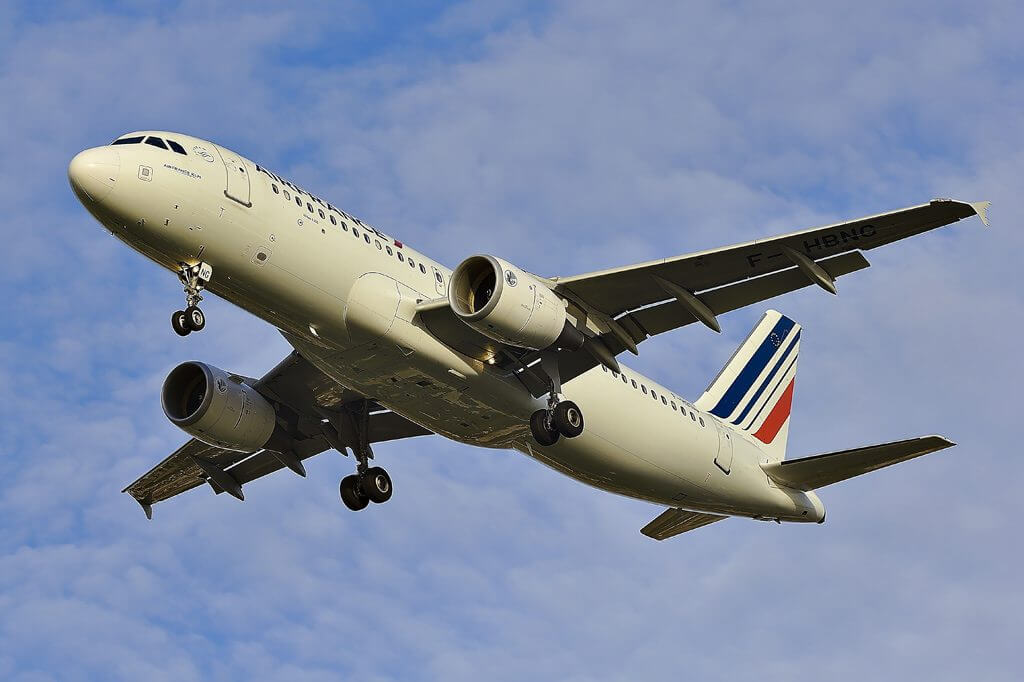
Flights in France are available, but they rarely make sense from a convenience or cost perspective. If you land in Paris Charles de Gaulle, but you are not interested in visiting the French capital, you can take a fast train to many French cities or look for other international airports in France closer to your final destination instead.
Also, France is in the process of banning short-haul domestic flights – where train alternatives exist – in a bid to reduce carbon emissions. This means that if the trip can be completed by train within two and a half hours, there won’t be a flight option.
That being said, there are some flying routes in France that make sense from a time, cost, and convenience perspective:
- Mainland to Corsica, instead of a train + ferry
- Northern France or Western France to Nice, without direct train connections
- Paris Charles de Gaulle or Paris Orly to Nice, without direct train connections
Use Omio website to find good flight deals in France. Air France is the main airline in France but there are cheaper options like Transavia, Ryan Air, or EasyJet. However, some of these airlines will charge extra for checked luggage, food onboard, and seat allocation.
5. Ferries in France
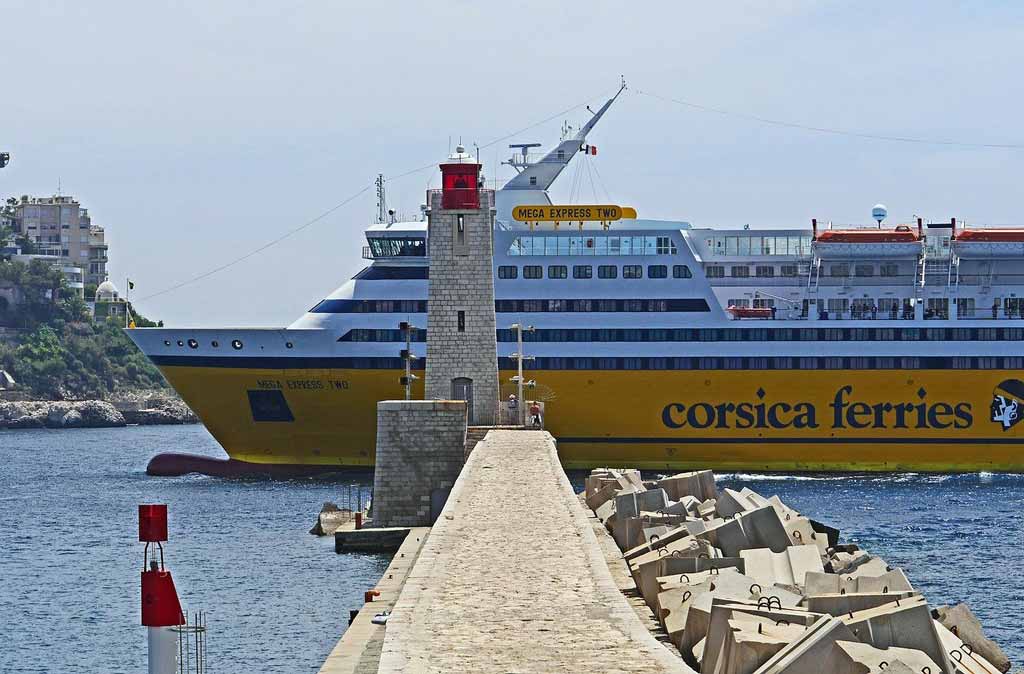
France mainland relies on several ferry services to travel to Corsica Island and other smaller islands in the Mediterranean Sea and the Atlantic Ocean. Ferries in France are fast, convenient, and an excellent alternative to flying.
Ferries to Corsica are operated by five different ferry companies: Blu Navy, Corsica Linea (formerly SNCM), Corsica Sardinia Ferries, Moby Lines, and La Méridionale. There are six ports on the island of Corsica, and routes to Corsica operate from Elba, France, Italy, and Sardinia. The ports in France mainland serving Corsica are Marseille, Toulon, and Nice.
The main ferry routes connecting France mainland to Corsica are:
- Marseille to Ajaccio
- Marseille to Bastia
- Marseille to Ile Rousse
- Marseille to Porto Vecchio
- Nice to Ajaccio
- Nice to Bastia
- Nice to Ile Rousse
- Nice to Porto Vecchio
- Toulon to Bastia
- Toulon to Ile Rousse
- Toulon to Porto Vecchio
The UK is also connected to France via different ferry lines, and this is a good option for UK travelers wishing to explore France with their car.
Numerous ferry crossings are operating from England to France. Ferries currently connect five ports in England with eight ports in France. The main ferry routes connecting France to the UK are:
- Dover – Calais
- Dover – Dunkirk
- Folkestone – Calais Eurotunnel
- Newhaven – Dieppe
- Plymouth – Roscoff
- Poole – Cherbourg
- Portsmouth – Cherbourg
- Portsmouth – St Malo
- Portsmouth – Caen
- Portsmouth – Le Havre
Different ferry companies run services throughout France, and sometimes their sites are hard to navigate.
When we book ferries we like to use Ferryhopper, a useful English language site with easy-to-understand travel routes, times, and prices for ferries in the Mediterranean, Atlantic Ocean or through the English Channel.
6. Buses in France
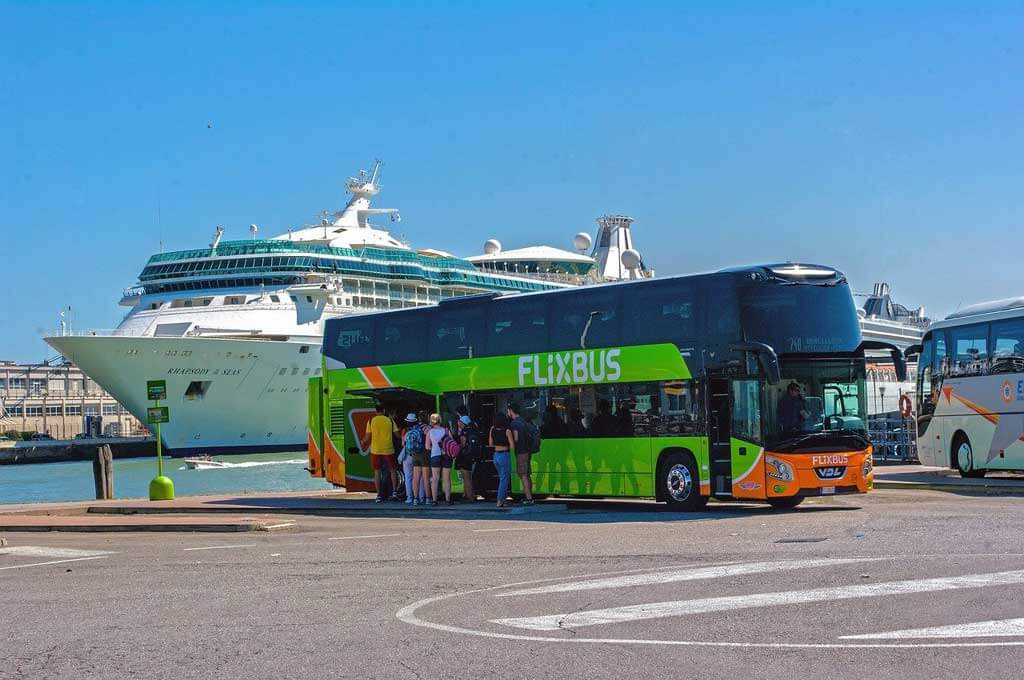
Buses in France is usually the cheapest means of tranport in France. Buses are a good budget alternative to trains, especially if you have plenty of time to get around. There is no national bus service in France so finding the best routes and prices requires a bit of research.
Flixbus has a big network of bus routes in France, especially between the main and smaller French cities. Flixbus’ fleet of buses offers comfortable seats, power, and wifi on board.
Local bus networks usually connect regional areas. If you don’t find what you are looking for on Flixbus, try Omio website for other bus companies.
And there you have it, our France transportation guide with all the ways to travel to and around France. With this quick guide on transportation in France and a little planning, crafting your French itinerary will be a breeze.

